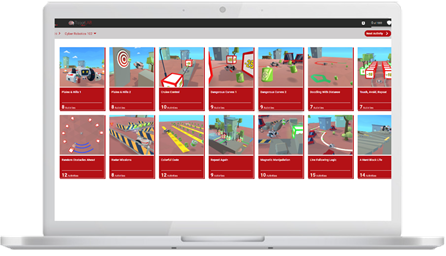Teaching virtually comes with its own set of challenges—especially during a pandemic. Use these strategies to focus on specific goals, embrace uncertainty, and keep communication open.

As school systems nationwide remain closed, educators feel a collective undercurrent of uncertainty from Covid-19, but also from the burden of providing quality online instruction. The responsibility of ensuring that kids do not fall irreparably behind during a months-long closure is daunting. Simple interventions and strategies may be the most effective in these challenging times.
PRIORITIZE SPECIFIC GOALS
Though it is easy to become mired in the details of each day’s lesson, digital instruction can be made less stressful by thinking more broadly about long-term learning. Making a list of nonnegotiables for the remainder of the school year centers focus on what matters. For example, when I taught AP Language, my highest priority was that students focus their energy on improving their writing skills in the three types of essays that occur on the test. If students showed mastery toward that writing goal, they then focused on secondary goals such as the acquisition of specific contextual vocabulary words or an increase in writing voice.
Identify the most pressing needs by using available information, such as student performance data or exit ticket indicators of student understanding during remote learning. The decision about what to consider nonnegotiable should be a collaborative effort among members of teaching teams, with consideration of ways to emphasize standards. For example a ninth-grade Algebra team might select a focus from the Standards for Mathematical Practice and require students to demonstrate proficiency before progressing.
Think about how nonnegotiable instruction is delivered: Is there an entry point to learning that all students can access with options for growth? For example, if students are writing about their experiences during the pandemic, some essential goals for their work, such as writing with a clear central message, can be set. Then teachers can identify additional options, like strengthening writing voice, to stretch student growth.
MEET STUDENTS WHERE THEY ARE
Beginning with nonacademic interaction can help remind students that the relationship is a priority, and it can also help us better understand and serve all students. Find ways to bridge into the lesson with relatable concepts. Using items from their current environment is one way to help students transition to online instruction. For example, if students are learning about fractions, ask them to gather items from home, such as a cookie, a sandwich, or a straw, and break them apart to create tangible fractions. Engage students as you move into direct instruction by asking questions that activate knowledge and conversation. In the example of teaching fractions, a useful question might be, “Let’s share stories about a time when we had to divide a snack or a toy with someone else.” By connecting a personal experience to an academic concept, teachers give students an accessible entry point to learning.
In a classroom, our carefully laid-out plans fail all the time, but we learn to accept the problems and gain knowledge from the experiences. The ability to accept these challenges is also important in digital learning, as video calls may fail, students may not be able to join from a distance, or our own children are clamoring for attention in the background. Embrace the chaos and take advantage of unpredictable moments.
If students want to pause the lesson to discuss a concern, allow for the time and space to talk. If your toddler dumps food on his head while you try to teach a history lesson, ask a class participant to facilitate the conversation while you clean up. By keeping calm and adjusting to the situation, we model to students ways to cope with disruption.
In addition to adjusting to unexpected changes, find ways to plan for the unpredictable circumstances of remote teaching. Creating opportunities for asynchronous instruction and learning can help mitigate some of the challenges. Flip the classroom by sending content through a Screencastify or other video that reinforces concepts. Recording lessons can be especially beneficial for students whose real-life conflicts interfere with attending class.
MAINTAIN OPEN COMMUNICATION
Keeping in touch with parents or guardians is always important, and it is especially critical for digital instruction. Vary the forms of communication when possible. Taking time for phone calls may help facilitate more direct interaction with parents or guardians. Prioritize contacting families where the highest concerns arise first. Designating specific times for calls can make the task more manageable. While communicating with the parents or guardians of struggling students is important, speaking with the families of students who are thriving can provide a touchstone to share positive news. Hearing about a child’s success amid distance learning challenges brings positivity to a trying situation and helps facilitate deeper relationships.
Maintain contact with students through text, email, or chat. Services such as Google Voice allow teachers to make contact without using a personal number. In written communication, such as email, text, or chat, add encouragement to temper constructive criticism. Communicating in a way that separates the student as a person from his or her work habits shows that while we may have concerns, we still appreciate the individual.
Keep teaching and learning during COVID-19 with RobotLAB and CoderZ!

CoderZ is an online educational environment that improves students 21st century skills, while they are having fun programming their own virtual cyber robot. CoderZ and RobotLAB has different lessons to do at home! Check them out Here

